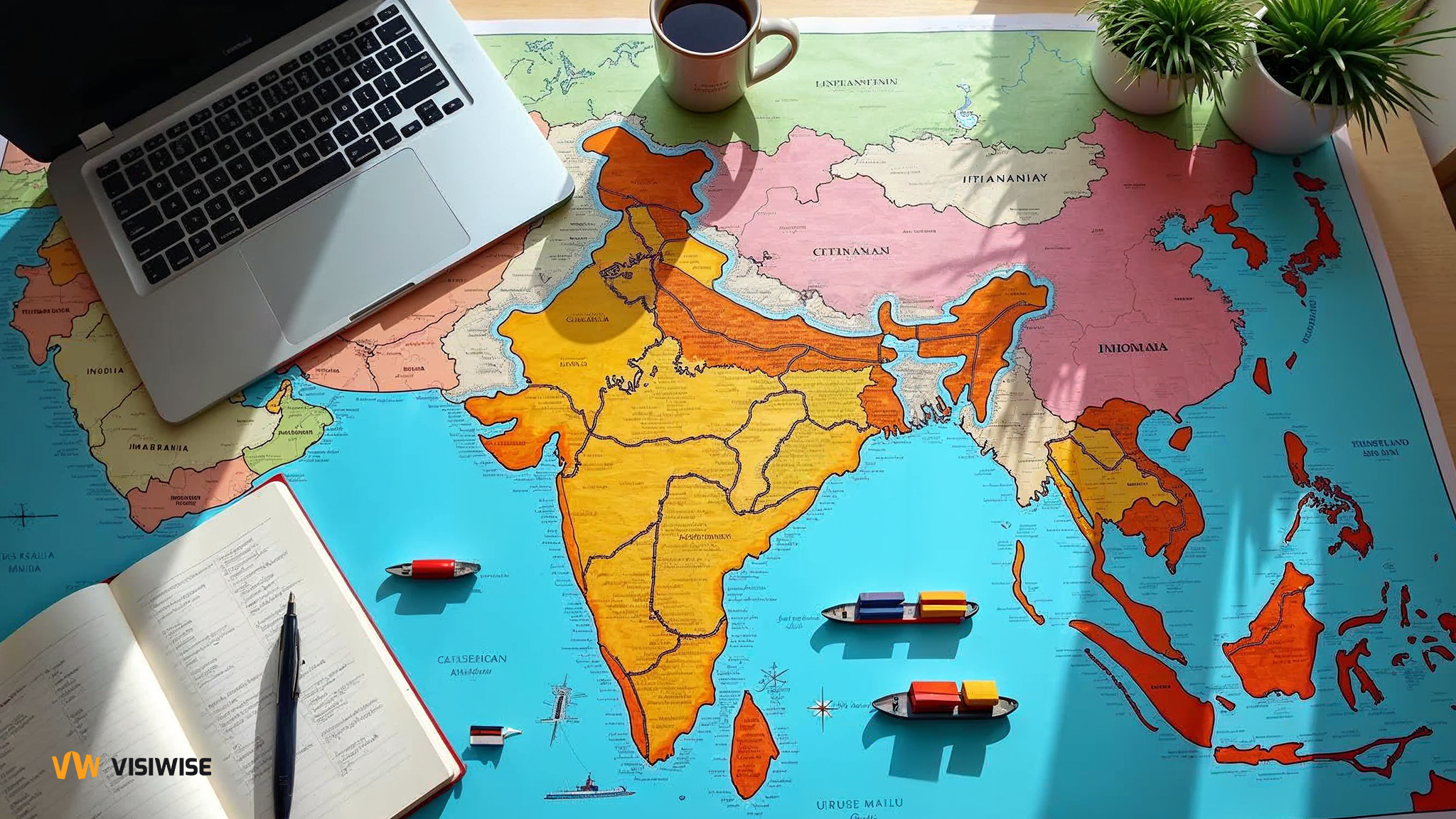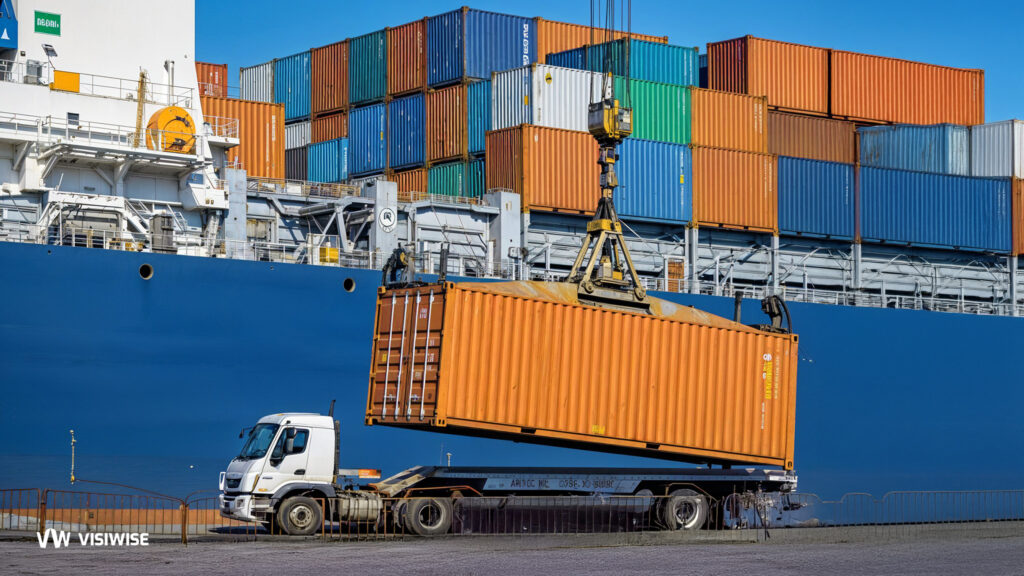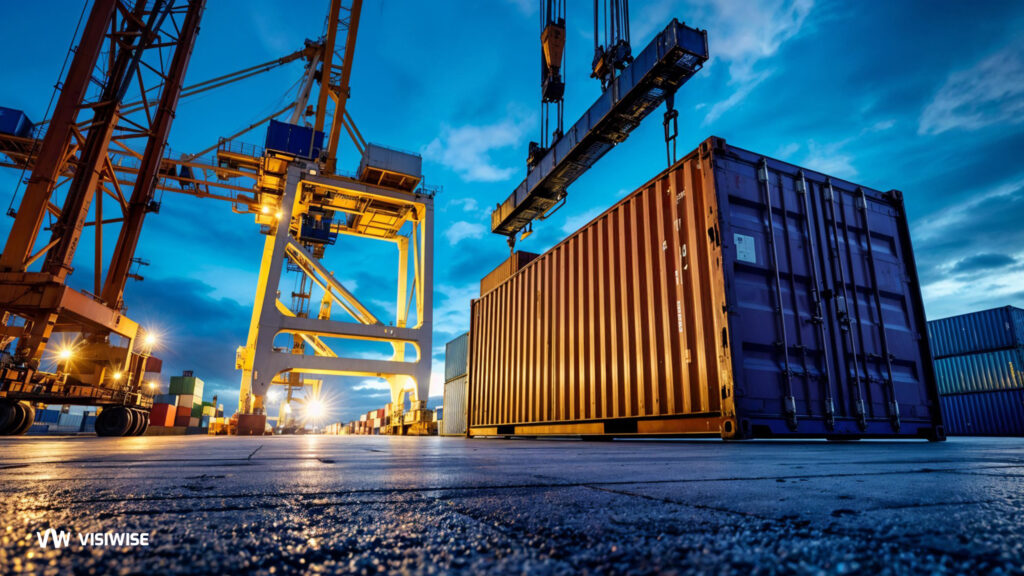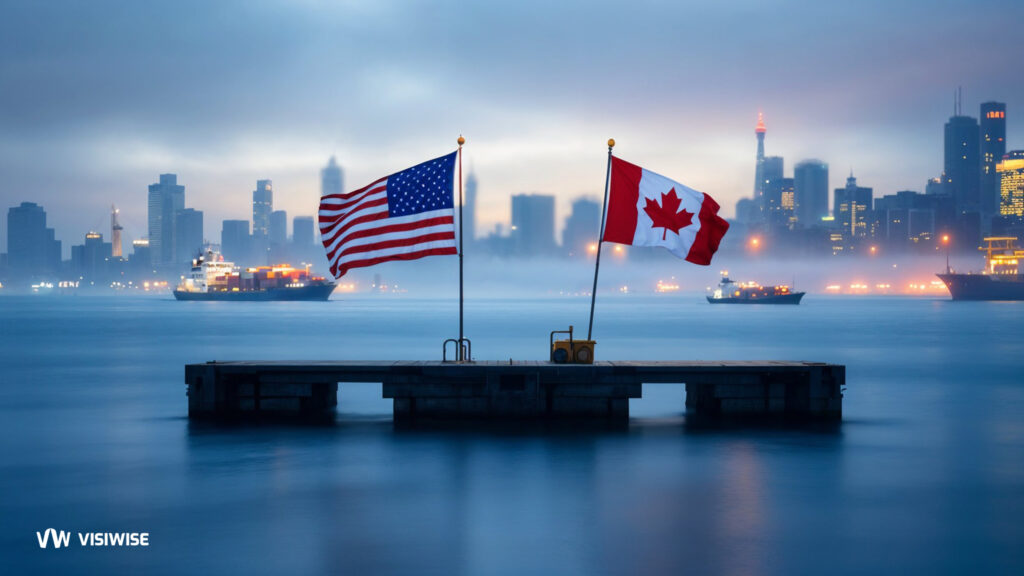India’s coastline, stretching over 7,500 kilometers, is home to some of the world’s most bustling and strategic maritime hubs. With trade forming a substantial part of its economy, India relies heavily on its major ports to manage the flow of goods, fuel economic growth, and connect the country to international markets. These ports, ranging from historic harbors to modern container terminals, handle everything from agricultural products and minerals to oil and consumer goods. In this article, we explore India’s key ports, examining their unique features, capacities, and the vital roles they play in the nation’s trade network and economic landscape.
How Many Major Ports Are There in India?
India has a robust ports and shipping sector, critical for supporting trade and commerce across the country. There are currently 12 major sea ports (occasionally counted as 13, depending on sources) along the east and west coasts, which are governed by the Indian government. In addition, 205 notified minor and intermediate ports support regional trade.
As part of the National Perspective Plan for Sagarmala, a strategic initiative aimed at modernizing ports and enhancing maritime infrastructure, six new mega ports are slated for development, further expanding India’s maritime capabilities. Here’s an overview:
Major Ports on the East Coast:
- Kolkata Port (including Haldia Dock Complex) – West Bengal
- Paradip Port – Odisha
- Visakhapatnam Port – Andhra Pradesh
- Chennai Port – Tamil Nadu
- Kamarajar Port (formerly Ennore Port) – Tamil Nadu
- V.O. Chidambaranar Port (formerly Tuticorin Port) – Tamil Nadu
Major Ports on the West Coast:
- Cochin Port – Kerala
- New Mangalore Port – Karnataka
- Mormugao Port – Goa
- Mumbai Port – Maharashtra
- Jawaharlal Nehru Port (Nhava Sheva) – Maharashtra
- Deendayal Port (formerly Kandla Port) – Gujarat
Optional 13th Major Port:
- Port Blair – Andaman and Nicobar Islands (often included due to its strategic location and importance)
These ports are integral to India’s trade network, handling the majority of seaborne cargo and linking various international routes.
Top 5 Largest Ports in India by Volume
India’s largest ports handle millions of tons of cargo annually. Here are the top five by volume:
- Jawaharlal Nehru Port (Nhava Sheva) – Maharashtra
- Volume: Approximately 65 million metric tonnes annually.
- Primary Cargo: India’s largest container port, handling a significant amount of containerized cargo, supporting both imports and exports for international trade.
- Deendayal Port (formerly Kandla Port) – Gujarat
- Volume: Around 120 million metric tonnes per year.
- Primary Cargo: Primarily dry bulk cargo, including grains, salt, coal, and petroleum products, which contributes to its status as one of India’s busiest ports by volume.
- Paradip Port – Odisha
- Volume: Close to 115 million metric tonnes annually.
- Primary Cargo: Majorly handles dry bulk cargo, such as coal, iron ore, and fertilizers, which supports India’s mining, power, and fertilizer sectors.
- Visakhapatnam Port – Andhra Pradesh
- Volume: Approximately 70 million metric tonnes each year.
- Primary Cargo: Known for bulk cargo, including iron ore, coal, and petroleum products, serving the eastern part of India’s hinterland.
- Mumbai Port – Maharashtra
- Volume: Roughly 62 million metric tonnes annually.
- Primary Cargo: Handles a diverse mix, including liquid cargo (oil and chemicals) and dry bulk, making it one of India’s oldest and most strategically important ports.
These ports contribute to a substantial portion of India’s overall cargo volume and remain vital to its economic strategy.
Natural and Artificial Ports: What Are the Differences?
Indian ports fall into two primary categories: natural and artificial. Natural ports, such as Mumbai, have deep water near the coast, naturally aiding maritime trade. Artificial ports, like Chennai, are developed through human intervention, using breakwaters and dredging to create harbor facilities where natural conditions may not have been ideal.
East Coast Ports: Chennai, Visakhapatnam, and Paradip
The east coast of India houses some prominent ports:
- Chennai Port – One of India’s oldest ports, known for handling a large volume of petroleum products, cars, and fertilizers.
- Visakhapatnam Port – A crucial port for iron ore exports and India’s largest port by volume until recently.
- Paradip Port – Located in Odisha, Paradip is vital for handling crude oil, iron ore, and coal.
These ports play key roles in trade with Southeast Asia and the Pacific region.
West Coast Ports: JNPT, Mumbai, and Mundra
The west coast is equally significant, with ports that cater to major trade partners in the Middle East, Africa, and Europe:
- Jawaharlal Nehru Port Trust (JNPT) – India’s largest container port, located in Maharashtra, specializes in containerized cargo.
- Mumbai Port – India’s primary natural harbor, handling a wide range of goods, from oil to chemicals.
- Mundra Port – A private port in Gujarat that has grown rapidly, Mundra handles diverse cargo, including coal, oil, and containers.
Which State Has the Most Major Ports in India?
Maharashtra is home to three of India’s 13 major ports: JNPT, Mumbai Port, and Mormugao Port (partially). This concentration of ports contributes significantly to the states and the nation’s economic strength.
What is India’s deepest port?
Krishnapatnam Port, with a depth of 18.5 meters, is the deepest port in India and can handle up to 75 million tons of cargo annually.
What is the Oldest Port in India?
The oldest port in India is the Syama Prasad Mookerjee Port Trust, formerly known as Kolkata Port Trust. Established in the 19th century, it has a rich history and has played a vital role in India’s maritime trade and commerce.
Major Ports in India for UPSC
"Major Ports in India" is a key topic for the UPSC IAS exam, especially within the Geography section of the Mains General Studies Paper-1 and General Studies Paper-1 in the Prelims syllabus. For aspirants preparing for UPSC, focusing on Major Ports in India is essential, as it carries significant weight in both Prelims and Mains exams.
What is the Oldest Port in India?
The oldest port in India is the Syama Prasad Mookerjee Port Trust, formerly known as Kolkata Port Trust. Established in the 19th century, it has a rich history and has played a vital role in India’s maritime trade and commerce.
The Largest Natural Port in India
The largest natural port in India is the Port of Mumbai, which is located on the west coast of India
What is the Largest Artificial Port in India?
The Jawaharlal Nehru Port Trust (Nhava Sheva), located in Mumbai, Maharashtra, is the largest artificial port in India. It is also the country’s largest container port, playing a critical role in facilitating international trade and handling a vast volume of containerized cargo, making it an essential part of India’s maritime infrastructure.
Mundra Port: India’s Largest Commercial Port by Cargo Volume
While Jawaharlal Nehru Port (Nhava Sheva) holds the title as India’s largest container port, Mundra Port in Gujarat has emerged as the largest commercial port in terms of overall cargo handled, including both bulk and containerized cargo.
Operated by Adani Ports and Special Economic Zone Limited (APSEZ), Mundra has rapidly expanded and surpassed other ports in India in terms of total cargo volume. Although it is also an artificial port, Mundra’s privately managed infrastructure and strategic location have made it the busiest port overall, even outpacing government-operated ports like Jawaharlal Nehru Port for total tonnage.
Jawaharlal Nehru Port vs. Mundra Port: A Comparison
Jawaharlal Nehru Port Trust (JNPT) and Mundra Port are often compared for their operational efficiencies and capacity:
1. Location and Management
- Jawaharlal Nehru Port Trust (JNPT), also known as Nhava Sheva, is located in Navi Mumbai, Maharashtra. As a state-run entity, JNPT is India’s largest public container port, serving as a key gateway on the western coast.
- Mundra Port, located in Kutch, Gujarat, is India’s largest private port, managed by Adani Ports and Special Economic Zone Ltd (APSEZ), which has emerged as the leading container operator in India by volume.
2. Container Handling and Growth
- Mundra Port: Mundra outpaced JNPT to become the top container port, handling 5.65 million TEUs in FY21 with an 18% year-on-year growth. It managed 144.4 million tonnes of cargo in the same year, with a 4% growth.
- JNPT: JNPT processed 4.676 million TEUs in FY21, reflecting a decline of 7% in container volumes, affected by competitive pressures and operational challenges. However, JNPT retains a significant share in India’s containerized trade with nearly 55% of all container cargo passing through India.
3. Infrastructure and Facilities
- JNPT has multiple container terminals, including:
- JNPT Container Terminal: Owned by JNPT with a 680-meter quay across three berths.
- Nhava Sheva International Container Terminal (NSICT): Managed by DP World, the first private terminal in India.
- Gateway Terminals India (GTI): Run by AP Moller Terminals with a capacity of 1.3 million TEUs.
- NSIGT Terminal: Currently under construction, expected to expand capacity significantly with a 2-km quay.
- Mundra Port operates a robust set of facilities:
- Container Terminals: Six berths equipped with 18 rail-mounted cranes and 48 gantry cranes.
- Coal Terminal: The world’s largest, capable of processing over 40 million tonnes annually.
- Liquid Bulk: 97 holding tanks and mechanized systems for liquid and bulk handling.
- Connectivity: Enhanced by the Mundra-Adipur railway line and proximity to highways, with developments underway to establish Mundra Airport as an air cargo hub.
4. Cargo Types and Specializations
- JNPT: Specializes in exports like textiles, machinery, chemicals, and pharmaceuticals. Major imports include machinery, metals, and vegetable oils. As a top-ranking port, it also features customs and logistics facilities with access to over 50 Inland Container Depots (ICDs) and 30 Container Freight Stations (CFS).
- Mundra Port: Handles a diverse mix of cargo types, from coal, crude oil, and chemicals to edible oils, automobiles, and agricultural products. Its facilities include dedicated units for bulk goods, pipelines, and extensive on-site storage.
5. Overall Performance and Strategic Position
- APSEZ and Mundra Port lead India’s container operations with a 41% market share in containers and a combined cargo handling capacity across its 12 ports. The port’s geographic location and private sector efficiency have supported its rapid expansion and its 48% container market share on India’s west coast.
- JNPT, despite competitive pressures, remains crucial to India’s trade infrastructure due to its historical position, customs facilities, and strategic location near Mumbai, with ongoing projects to enhance logistics capabilities through its Multimodal Logistics Park (MMLP).
6. Key Highlights
- JNPT: Known for its role in India’s export-import (EXIM) trade, strong institutional framework, and consistent container handling above 4 million TEUs annually.
- Mundra Port: India’s largest container and bulk cargo port with dynamic private-sector-led growth, strategic infrastructure investments, and leading operational efficiency under APSEZ’s management.
In summary, while JNPT plays a foundational role in India’s public port infrastructure, Mundra Port, under APSEZ’s aggressive expansion, has emerged as the nation’s largest container gateway, with strengths in multimodal connectivity and diverse cargo handling capabilities.
India’s Maritime Infrastructure at a Glance
• Maritime transport handles 95% of India’s trade by volume and 70% by value.
• India boasts 13 major ports and 205 notified minor and intermediate ports.
• As part of the Sagarmala Project, six new mega ports are set to be developed.
• The majority of India’s ports are located in the following states:
- Maharashtra: 53
- Gujarat: 40
- Tamil Nadu: 15
- Karnataka: 10
Conclusion: The Role of Ports in India’s Economic Growth
India’s major ports not only support national trade but also foster regional development, connecting inland areas to global trade routes. As the government invests in infrastructure and modernization, these ports will continue to drive India’s economic growth by facilitating faster, more efficient trade with the world.



